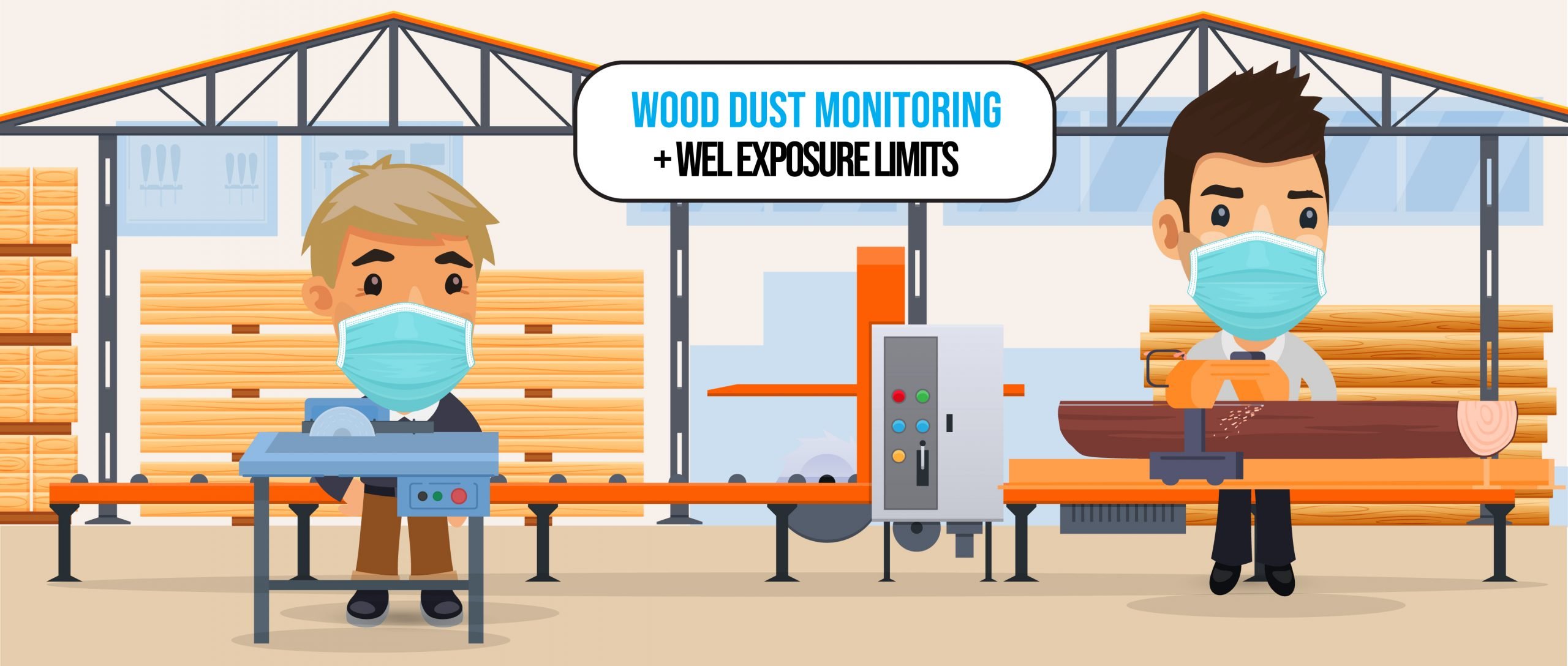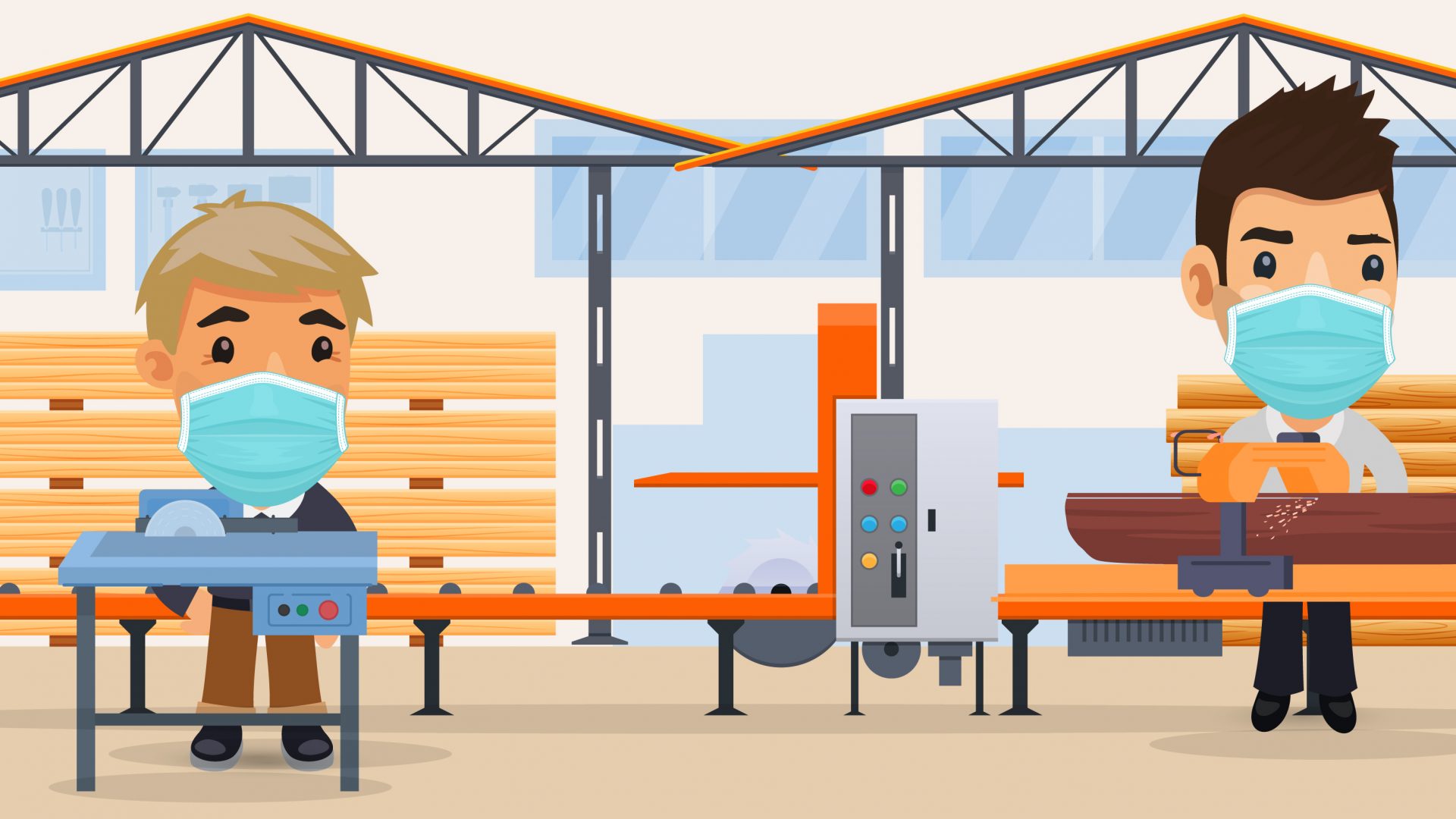Understanding The Risks of Wood Dust and How to Protect Your Workplace
Wood dust monitoring is a requirement when wood dusts (a by-product of woodworking) are created when wood is cut, sanded, or otherwise processed in the workplace to protect your workforce from potentially dangerous exposure.
The dust is composed of microscopic particles that can be inhaled, which can lead to health problems if not properly controlled.
Employers have a legal responsibility to reduce exposure to wood dust as low as reasonably practicable (ALARP).
In the United Kingdom, the exposure limit for wood dust is regulated by Workplace Exposure Limits (WELs) and set by the Health and Safety Executive (HSE).
In this article, we will take a closer look at the risks of these dusts, who potentially requires monitoring, the workplace exposure limits for the UK, and how ECL can help with the monitoring of dusts in your workplace.

WHAT IS HARDWOOD AND SOFTWOOD DUST?
Hardwood dust is generated from a variety of sources, including sawing, sanding, and routing of hardwood materials such as oak, beech, and mahogany. It can also be found in wood-based panel products, such as chipboard and plywood. Examples of softwood trees include pine, spruce, and fir.
Softwoods are known for their lightness and resiliency, making them ideal for construction, paper production and other industrial uses. In general, hardwood is typically denser, and heavier than softwood, and the cells of hardwood are smaller and tighter packed than those of softwood,
Hardwood dust is typically finer than softwood dust and can stay suspended in the air for longer periods of time, making it more easily inhaled.
It’s for this reason Hardwood dust has been classified as a Group 1 carcinogen by the International Agency for Research on Cancer (IARC) and has been found to cause cancer in humans.
Therefore the Workplace Exposure Limits for hardwood dust is lower than softwood dust, because of the higher risk that hardwood dust poses to human health.
Both hardwood dust and softwood dust are dangerous to inhale and must be controlled properly to avoid negative health effects. However, hardwood dust is considered to be a more serious risk than softwood dust, and employers must take more stringent measures to control hardwood dust in the workplace.
WHY IS WOOD DUST A RISK?
Exposure to hardwood dust can lead to a number of health problems, including respiratory issues such as asthma and chronic bronchitis.
Prolonged exposure to hardwood dust can also lead to a condition called hardwood lung, which is a type of hypersensitivity pneumonitis.
Additionally, hardwood dust has been classified as a Group 1 carcinogen by the International Agency for Research on Cancer (IARC), meaning it is a substance that is known to cause cancer in humans. Softwood dust has not been found to cause cancer but it can still cause serious respiratory issues.
WHO REQUIRES WOOD DUST MONITORING?
Employers in the UK and Europe have a legal responsibility to ensure that their workers are not exposed to dangerous levels of wood dust.
This means that any workplace where wood materials are processed, such as woodworking factories, joineries and furniture manufacturers, require wood dust monitoring or Workplace Exposure Monitoring to ensure that the WELs are being complied with.
WHAT ARE THE WORKPLACE EXPOSURE LIMITS FOR WOOD DUST IN THE UK?
The WEL for wood dust in the United Kingdom is 3 mg/m3, averaged over an 8-hour reference period. This means that employers are responsible for ensuring that workers are not exposed to levels of wood dust above this limit.
Employers should also implement appropriate control measures to minimize exposure, such as using dust extraction systems, LEV Testing, providing adequate personal protective equipment and implementing regular cleaning and maintenance procedures.
However, there are different exposure limits for different types of wood dust;
It was rumored, and falsely stated via various blogs and social media, that the WEL for hardwood dust would be further reduced to 2mg/m3 in the UK as of January 2023. This has seemingly caused a lot of confusion. ECL has received a definitive statement from senior HSE Inspectors that the UK will NOT be reducing the hardwood dust WEL to 2mg/m3 and it will remain 3mg/m3 over an 8-hour reference period. The limit will only be reduced to 2mg/m3 in Europe.
The WEL for hardwood dust is 3 mg/m3, over the same 8-hour reference period, but the workplace exposure limit for softwood dust is slightly higher at 5 mg/m3, over the same 8-hour reference period. For mixed exposures to soft and hard wood dusts, the WEL for hardwood dust should be applied.
Employees should not be exposed to airborne concentrations of wood dust above these limits and the employer has a responsibility to reduce exposure as low as reasonably practicable (ALARP).
It is worth noting that these WELs are time-weighted averages (TWAs) meaning it’s an average exposure level over a specific period of time, these exposure limits are not peak exposure limits.
HOW DO YOU MONITOR FOR WOOD DUST?
There are different ways to monitor wood dust levels in the workplace in the United Kingdom, some of the most common methods, all based on HSE method reference MDHS 14/4, include:
- Personal Sampling: Personal sampling involves attaching a small sampling pump attached to a sampling head which is worn in the operators breathing zone which collects the dust to which the worker is potentially exposed. The device is then removed and the sample is analysed, by gravimetric means as per MDHS 14/4, to determine the levels of wood dust present.
- Area Sampling: Area sampling involves placing a sampling device in a specific location within the workplace to collect a sample of the dust present in that area. The device is left in place for a period of time, typically several hours, before it is removed and the sample is analysed, again by gravimetric means in accordance with MDHS 14/4.
In general, the choice of monitoring method will depend on the specific circumstances of the workplace and the type of wood dust present.
ECL have a dedicated Occupational Hygiene team specialised in Occupational Exposure Monitoring who can help measure exposure to wood dust in the workplace.
Once wood dust levels are determined, we can compare with the appropriate WEL and control measures can be taken if necessary.
YOUR DUST AND EXPOSURE EXPERTS
In conclusion, wood dust is a serious health risk, but with appropriate controls and precautions, it can be effectively managed to protect workers.
ECL provides comprehensive workplace exposure monitoring that can help employers ensure compliance with the latest WELs and protect the health and safety of their workers. Our service includes:
- On-site monitoring to measure the levels of contaminants in the air
- Analysis of monitoring results and interpretation of the data
- Recommendations for appropriate control measures
- Ongoing support and guidance to help employers and employees maintain compliance
Our network of local offices across the UK, in Cardiff (Wales), Leeds (West Yorkshire), Newcastle and the West Midlands, allow ECL to provide a cost-effective service nationwide. We service all project sizes from small business to large corporate infrastructure projects.
Fill out our short ECL Enquiry Form or call us on 01443 841760 for any queries regarding COSHH compliance, wood dust WEL, Workplace Noise Assessments or any of our other Occupational Hygiene Services.

